According to the National Institute of Health, in a normal day a person takes about 25,000 breaths. The importance of the lungs to general health cannot be overstated. The lungs help to oxygenate your blood and expel carbon dioxide, two extremely vital bodily processes. The oxygen in red blood cells is transported throughout the body and is a necessary component of almost every cellular process that occurs.
Without properly functioning lungs, overall health decreases considerably. There are many different types of lung diseases, but some of the most deadly and dangerous lung diseases are lung infections. Fortunately our Tampa pulmonary group is here to offer treatment options for even the most challenging cases.
Let’s look at some common lung infections, and symptoms of pulmonary issues:
Treating Bronchitis in Tampa
Bronchitis
Bronchitis is the infection and inflammation of the bronchi, which are the medium and large airways in the lungs. Bronchitis is typically a viral infection, however, in some cases the cause is air pollution or bacteria. Acute bronchitis is an extremely common infection. It is often referred to as a “chest cold” and typically goes away within a few weeks. But, if bronchitis occurs often or for extended periods of time, then a patient might have “chronic bronchitis” and should seek medical attention and treatment.
Symptoms of bronchitis include a productive cough (with yellow or green mucus), runny or stuffy nose, fatigue, sore ribs from prolonged coughing, wheezing, and a whistling sound when breathing.
Bronchiolitis
Bronchiolitis is similar to bronchitis, except it is the infection and inflammation of bronchioles, which are the smallest air passageways of the lungs. Bronchiolitis is almost always a viral infection and mostly affects children and infants. It can present in adults, however it is rare and very serious. Bronchiolitis can cause scarring of the bronchioles and other lung tissue.
The symptoms of bronchiolitis are similar to those of bronchitis. They include shortness of breath, wheezing, fatigue, cough, fast breathing, cracking or rattling sounds heard in the lungs, and bluish appearance of the skin from lack of oxygen.
> Explore all Tampa Pulmonary Services
Pneumonia
Pneumonia is an inflammatory infection of the alveoli in the lungs. According to Dr. Hooker, “pneumonia is a tricky infection because it can be either bacterial, viral, or fungal.” The alveoli are microscopic air sacs in the lungs, which are invaluable to blood oxygenation. Pneumonia causes these sacs to fill up with fluid and impedes their function.
There are over 30 types of pneumonia, and they are typically classified into groups based on their cause. Bacteria, viruses, inhalation of toxins, and fungi can all be causes of pneumonia. Some pneumonia can be overcome without medication at home, however, other treatments include antibiotics, anti-inflammatory medications, and other over the counter treatments.
The pulmonary symptoms of pneumonia can vary. Common symptoms include coughing (often mucus producing), fever, shaking, chills, fast breathing, shallow breathing, chest pain, fast heartbeat, nausea, and fatigue.
Tuberculosis
Tuberculosis is a bacterial infection of the lungs that used to be extremely common, and then became very uncommon. However, according to Dr. Lorch, “tuberculosis has become more common in the recent past in AIDS patients and other patients with compromised immune systems, such as individuals undergoing chemotherapy.”
Tuberculosis is a very serious condition, but thankfully, it is rare in otherwise healthy adults in the United States. Symptoms of tuberculosis include coughing that lasts for three or more weeks, coughing up blood, chest pain, unintentional weight loss, fatigue, fever, chills, and loss of appetite. TB can also affect your kidneys, spine, and brain.
Pulmonary Associates of Brandon
If you are experiencing lung disease symptoms in the Tampa Bay area, then you can go to the Pulmonary Associates of Brandon. Their highly trained staff can perform a range of diagnostic testing such as pulmonary function tests and chest x-rays to determine whether or not you have a lung infection, and how to treat it.

